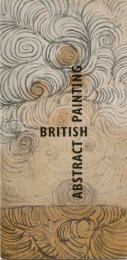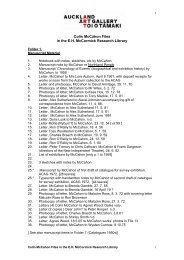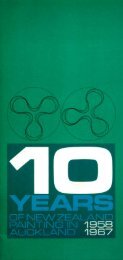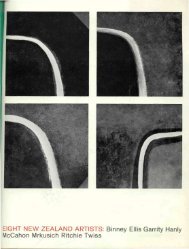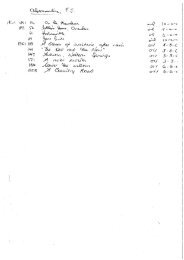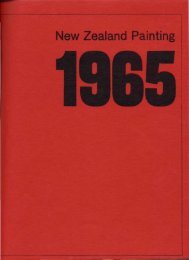You also want an ePaper? Increase the reach of your titles
YUMPU automatically turns print PDFs into web optimized ePapers that Google loves.
Packing / HandlingThe now empty carton or crate, with all its packingmaterials carefully reinstalled, must be resealed andstored at another location. Crates and boxes now emptycan be stacked to minimise space requirement.Temporary Storage—any framed works awaitingpacking must either be stored in a slotted storage area orrest on padded blocks against the wall to raise themfrom the floor. All protruding hanging devices must beremoved and boards used to separate works if stacked.No more than three works of similar size should bestacked on blocks at any one time.Smaller items waiting to be packed must be safelyassembled with soft sandbags or cushions between them,inhibiting any movement and so preventing damage bytheir falling against each other.Trolleys—are the safest method of moving works ofart within the building. They can be designed to carry alltypes of objects: paintings, sculpture, furniture, smalldecorative art objects and works on paper. They are themost useful tool that any institution can provide. It is farsafer than transporting by hand as the object can becushioned and secured to prevent any movement.Packing Small Items of the Decorative and Applied <strong>Art</strong>sThese rules and methods of packing can apply to objectsin ceramic, glass, stone, ivory, bone, teeth and metal fora travelling exhibition or short-term storage.Packing with Boxes—in many cases, the most effectivemethod of packing small works is to box them.Suitable box sizes can be determined once the dimensionsof all items to be packed have been recorded (anumber of commercially produced cartons are availablein New Zealand). It is advisable to reduce the number ofsizes used to two or three which will accommodate allof the objects. These, because of their modular form, can(when packed) be stacked and strapped together, orcrated in containers built to accommodate their particularmultiple dimension.Pre-assemble the cartons required—often one toeach object, stacked in order of size for ease of retrieval.Assemble the objects to be packed in a safe placeadjacent to the packing area where they will be collectedas required by the packers.Objects may require soft sandbags or pillowsbetween them in order to prevent accidental damageduring this holding period.There must be a supervisor to oversee the wholeexercise, to answer queries and to superintend the safeflow of work.Trolleys with cushions should be used to moveobjects from the assembly storage point to the worktable.When documentation and packing is completed andthe carton sealed, the clear labelling of contents is vital.A person (or more than one) is needed to both supplythe prepared cartons to each table and to removethem to their designated station when packed.Securing the Objects using the Tray and StrappingMethod—in almost all cases, the most effective methodof packing small works is to box them using an interiortray and strapping method as illustrated. It follows theprinciple of a ‘box within a box’, which is an immenselysatisfying and safe technique.The tray and strapping technique allows objects ofdisparate shapes to use a common size of box. A minimumclearance of at least 50 mm must be allowedaround each object within the carton walls.The tray is cut with corrugations running lengthwiseas indicated in the diagram on page 56 and bruisedfor creasing across the grain for added strength.Allowance must be made for a 30–50 mm layer of foamlying below the tray and on the floor of the box.The tray with folding walls should be an easy fit intothe box—fingerholes cut into the sliding walls will facilitateboth insertion and removal of the packed tray.If the object has a fragile foot or rim, or other vulnerableparts, a series of soft supports will be needed tocushion these areas. It may require the cut seating/shapingof the artefact to stabilise it, so Evazote may be usedto replace Cellaire as its floor.55



